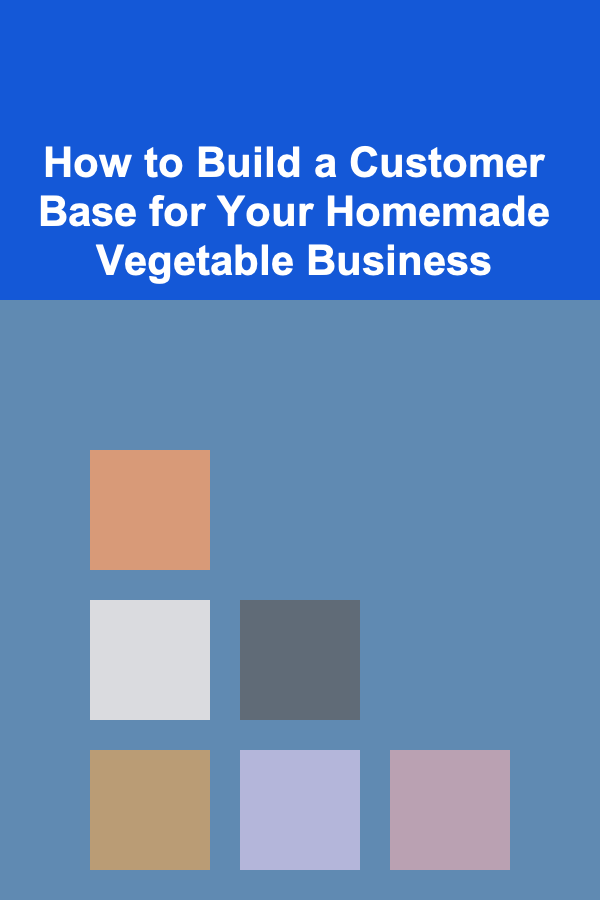
Mastering Content Creation for Beginners: A Comprehensive Guide
ebook include PDF & Audio bundle (Micro Guide)
$12.99$5.99
Limited Time Offer! Order within the next:

Content creation is the backbone of any successful online presence, whether you're building a personal brand, running a business, or simply sharing your passions with the world. However, starting can feel overwhelming. Where do you begin? What kind of content should you create? How do you ensure it resonates with your audience? This comprehensive guide will break down the process, offering actionable strategies and practical tips to help you master content creation from the ground up.
Understanding the Fundamentals
What is Content Creation?
At its core, content creation involves producing valuable, engaging, and relevant material that attracts and retains a specific audience. This content can take many forms, including:
- Blog posts: Written articles covering a range of topics, from informative guides to personal stories.
- Social media posts: Short-form updates, images, videos, and engaging questions designed for platforms like Facebook, Instagram, Twitter, and LinkedIn.
- Videos: Educational tutorials, entertaining vlogs, product demonstrations, and more.
- Infographics: Visually appealing representations of data and information.
- Podcasts: Audio programs covering various subjects through interviews, discussions, and storytelling.
- Ebooks and white papers: In-depth guides and reports offering detailed information on specific topics.
- Email newsletters: Regular updates and valuable content delivered directly to subscribers' inboxes.
Why is Content Creation Important?
Effective content creation is crucial for several reasons:
- Attracting and engaging your audience: High-quality content draws people to your website or social media channels and keeps them coming back for more.
- Building brand awareness and authority: Consistent creation of valuable content establishes you as a knowledgeable and trusted source in your industry.
- Driving traffic to your website: Search engines like Google reward websites that publish fresh, relevant content, leading to increased organic traffic.
- Generating leads and conversions: Compelling content can entice visitors to take specific actions, such as subscribing to your email list, requesting a demo, or making a purchase.
- Improving SEO (Search Engine Optimization): Strategic use of keywords and high-quality content helps your website rank higher in search engine results.
- Fostering community: Engaging content encourages interaction and conversation, building a strong community around your brand.
Defining Your Target Audience
Before you start creating content, you need to clearly define your target audience. Understanding their needs, interests, and pain points is essential for creating content that resonates with them. Consider the following:
- Demographics: Age, gender, location, income, education level.
- Interests: What are they passionate about? What topics do they care about?
- Pain points: What problems are they trying to solve? What challenges are they facing?
- Online behavior: Where do they spend their time online? Which social media platforms do they use? What types of content do they prefer?
- Keywords: What search terms are they using to find information related to your industry?
Creating a detailed buyer persona can be incredibly helpful. A buyer persona is a semi-fictional representation of your ideal customer, based on research and data about your existing and prospective customers.
Developing a Content Strategy
Setting Goals and Objectives
What do you hope to achieve with your content? Are you trying to increase brand awareness, generate leads, drive sales, or build a community? Define specific, measurable, achievable, relevant, and time-bound (SMART) goals to guide your content strategy.
Examples of SMART goals:
- Increase website traffic by 20% in the next three months.
- Generate 50 new leads per month through content marketing.
- Increase social media engagement (likes, shares, comments) by 15% in the next quarter.
Choosing the Right Content Formats
Consider your target audience and your goals when choosing the right content formats. Some formats are better suited for certain purposes than others. For example:
- Blog posts: Ideal for providing in-depth information, answering frequently asked questions, and improving SEO.
- Social media posts: Great for building brand awareness, engaging with your audience, and driving traffic to your website.
- Videos: Effective for demonstrating products, sharing tutorials, and creating emotional connections with your audience.
- Infographics: Excellent for visually representing data and complex information.
Keyword Research
Keyword research is the process of identifying the terms and phrases that your target audience uses when searching for information online. This information is crucial for optimizing your content for search engines.
Tools for keyword research:
- Google Keyword Planner: A free tool from Google that helps you find keywords and estimate their search volume.
- SEMrush: A comprehensive SEO tool that provides detailed keyword data and competitive analysis.
- Ahrefs: Another popular SEO tool with robust keyword research capabilities.
- Moz Keyword Explorer: A tool that helps you discover relevant keywords and analyze their potential.
Focus on long-tail keywords -- longer, more specific phrases that have lower search volume but higher conversion rates. For example, instead of targeting the keyword "shoes," target "best running shoes for beginners with flat feet."
Creating a Content Calendar
A content calendar helps you plan and organize your content creation efforts. It outlines what content you'll create, when you'll publish it, and where you'll promote it.
Benefits of using a content calendar:
- Staying organized: Keeps you on track and prevents you from missing deadlines.
- Ensuring consistency: Helps you publish content regularly, which is important for building an audience.
- Planning ahead: Allows you to plan for upcoming events, holidays, and product launches.
- Repurposing content: Helps you identify opportunities to repurpose existing content into different formats.
Your content calendar should include:
- Publication date: When the content will be published.
- Title: The title of the content.
- Topic: The subject matter of the content.
- Format: The type of content (blog post, video, infographic, etc.).
- Target keywords: The keywords you'll be targeting.
- Call to action: What you want readers to do after consuming the content.
- Author: Who is responsible for creating the content.
- Promotion channels: Where you'll promote the content.
Crafting Compelling Content
Writing Engaging Headlines
Your headline is the first thing people see, so it needs to grab their attention and entice them to click. Use strong verbs, numbers, and emotional words to create compelling headlines.
Examples of effective headlines:
- "10 Tips for Writing Killer Blog Posts"
- "The Ultimate Guide to Content Marketing for Beginners"
- "How to Overcome Your Fear of Public Speaking"
- "Secrets to a Productive Morning Routine"
Structuring Your Content for Readability
Make your content easy to read and digest by using headings, subheadings, bullet points, and short paragraphs. Break up large blocks of text to improve readability.
Use the inverted pyramid style for writing blog posts: start with the most important information at the top and then gradually provide more detail.
Using Storytelling Techniques
Stories are a powerful way to connect with your audience and make your content more memorable. Use anecdotes, personal experiences, and case studies to illustrate your points and engage your readers.
Adding Visuals
Images, videos, and infographics can make your content more visually appealing and engaging. Use high-quality visuals that are relevant to your content and help to illustrate your points.
Free resources for finding images and videos:
- Unsplash: High-resolution photos.
- Pexels: Free stock photos and videos.
- Pixabay: Another source for free images and videos.
- Canva: A tool for creating graphics and visual content.
Optimizing for SEO
Optimize your content for search engines by incorporating your target keywords naturally throughout your text. Use keywords in your title, headings, and body copy, but avoid keyword stuffing.
Other SEO tips:
- Write meta descriptions: A brief summary of your content that appears in search engine results.
- Use alt text for images: Descriptive text that describes your images to search engines.
- Link to relevant internal and external resources: This helps search engines understand the context of your content and improves your website's authority.
Creating a Strong Call to Action
Tell your readers what you want them to do after they've finished reading your content. Do you want them to subscribe to your email list, download a free ebook, or request a demo? Make your call to action clear and compelling.
Examples of effective calls to action:
- "Subscribe to our newsletter for more tips and insights."
- "Download our free ebook to learn more about [topic]."
- "Request a demo today and see how we can help you [achieve a specific goal]."
Promoting Your Content
Social Media Marketing
Share your content on your social media channels to reach a wider audience. Tailor your message to each platform and use relevant hashtags to increase visibility.
Social media promotion tips:
- Share your content multiple times: Don't just share it once and forget about it. Schedule regular updates to keep it in front of your audience.
- Engage with your followers: Respond to comments and questions, and participate in relevant conversations.
- Use visuals: Images and videos are more engaging than text-only posts.
- Run social media ads: Target your ads to reach a specific audience and promote your content to a wider audience.
Email Marketing
Email marketing is a powerful way to reach your subscribers and promote your content. Send out regular newsletters with links to your latest blog posts, videos, and other content.
Email marketing tips:
- Segment your email list: Send targeted emails to different segments of your audience based on their interests and behavior.
- Write compelling subject lines: Your subject line is the first thing people see, so it needs to grab their attention and entice them to open your email.
- Personalize your emails: Use your subscribers' names and tailor your message to their individual needs.
- Track your results: Monitor your open rates, click-through rates, and conversion rates to see what's working and what's not.
Guest Blogging
Write guest posts for other blogs in your industry to reach a new audience and build your authority. Include a link back to your website in your author bio.
Influencer Marketing
Collaborate with influencers in your industry to promote your content to their followers. Find influencers who are relevant to your target audience and have a strong following.
Paid Advertising
Consider using paid advertising to promote your content to a wider audience. Platforms like Google Ads and social media advertising can help you reach a targeted audience and drive traffic to your website.
Analyzing and Improving Your Content
Tracking Key Metrics
Monitor key metrics to see how your content is performing. This will help you understand what's working and what's not, and make adjustments to your content strategy as needed.
Key metrics to track:
- Website traffic: How many people are visiting your website?
- Page views: How many pages are people viewing on your website?
- Bounce rate: How many people are leaving your website after viewing only one page?
- Time on page: How long are people spending on each page?
- Social media engagement: How many likes, shares, and comments are your social media posts receiving?
- Email open rates and click-through rates: How many people are opening your emails and clicking on the links?
- Lead generation: How many leads are you generating from your content?
- Conversions: How many people are taking the desired action after consuming your content (e.g., subscribing to your email list, requesting a demo, making a purchase)?
Using Analytics Tools
Use analytics tools like Google Analytics to track your website traffic and user behavior. These tools provide valuable insights into how people are interacting with your content.
A/B Testing
A/B testing involves testing two different versions of your content to see which one performs better. For example, you could test two different headlines or two different calls to action. Use A/B testing to optimize your content for maximum impact.
Gathering Feedback
Ask your audience for feedback on your content. What do they like? What do they dislike? What would they like to see more of? Use their feedback to improve your content and make it more relevant to their needs.
Continuously Improving
Content creation is an ongoing process. Continuously analyze your results, gather feedback, and make adjustments to your content strategy as needed. The more you experiment and learn, the better you'll become at creating content that resonates with your audience.
Overcoming Common Challenges
Writer's Block
Writer's block is a common challenge for content creators. When you're struggling to come up with ideas, try the following:
- Brainstorm: Write down all of your ideas, no matter how silly they seem.
- Read: Read blogs, articles, and books in your industry to get inspiration.
- Talk to others: Talk to colleagues, friends, and family members about your topic.
- Take a break: Sometimes, the best thing you can do is step away from your work and come back to it later with fresh eyes.
Time Management
Content creation can be time-consuming. Manage your time effectively by setting realistic goals, prioritizing tasks, and using productivity tools.
Maintaining Consistency
It can be difficult to maintain a consistent content creation schedule. Create a content calendar and stick to it as much as possible. Batch your content creation tasks to make the process more efficient.
Staying Motivated
It's easy to get discouraged when you're not seeing immediate results. Remember why you started creating content in the first place and focus on the long-term benefits. Celebrate your successes and learn from your failures.
Tools and Resources for Content Creators
Here's a list of helpful tools and resources for content creators:
- Grammarly: A tool for checking grammar and spelling.
- Hemingway Editor: A tool for improving the readability of your writing.
- Canva: A tool for creating graphics and visual content.
- Adobe Creative Suite: A suite of tools for creating professional-quality images, videos, and audio.
- Google Analytics: A tool for tracking website traffic and user behavior.
- Google Search Console: A tool for monitoring your website's performance in Google search results.
- Buffer: A social media scheduling tool.
- Hootsuite: Another social media management tool.
- Mailchimp: An email marketing platform.
- ConvertKit: Another email marketing platform.
Conclusion
Mastering content creation is a journey, not a destination. It requires dedication, practice, and a willingness to learn and adapt. By understanding the fundamentals, developing a solid content strategy, crafting compelling content, promoting your work effectively, and continuously analyzing and improving, you can build a successful online presence and achieve your goals. Don't be afraid to experiment, try new things, and find what works best for you and your audience. Good luck!

How to Build a Customer Base for Your Homemade Vegetable Business
Read More
How to Create a Family Crafting Corner at Home
Read More
How to Keep Pet Hair Under Control in Organized Spaces
Read More
How to Use Color and Decor to Transform Your Space
Read More
Understanding Virtual Reality for Medical Training: A Deep Dive
Read More
The Art and Science of Flavored Salts: A Comprehensive Guide
Read MoreOther Products

How to Build a Customer Base for Your Homemade Vegetable Business
Read More
How to Create a Family Crafting Corner at Home
Read More
How to Keep Pet Hair Under Control in Organized Spaces
Read More
How to Use Color and Decor to Transform Your Space
Read More
Understanding Virtual Reality for Medical Training: A Deep Dive
Read More